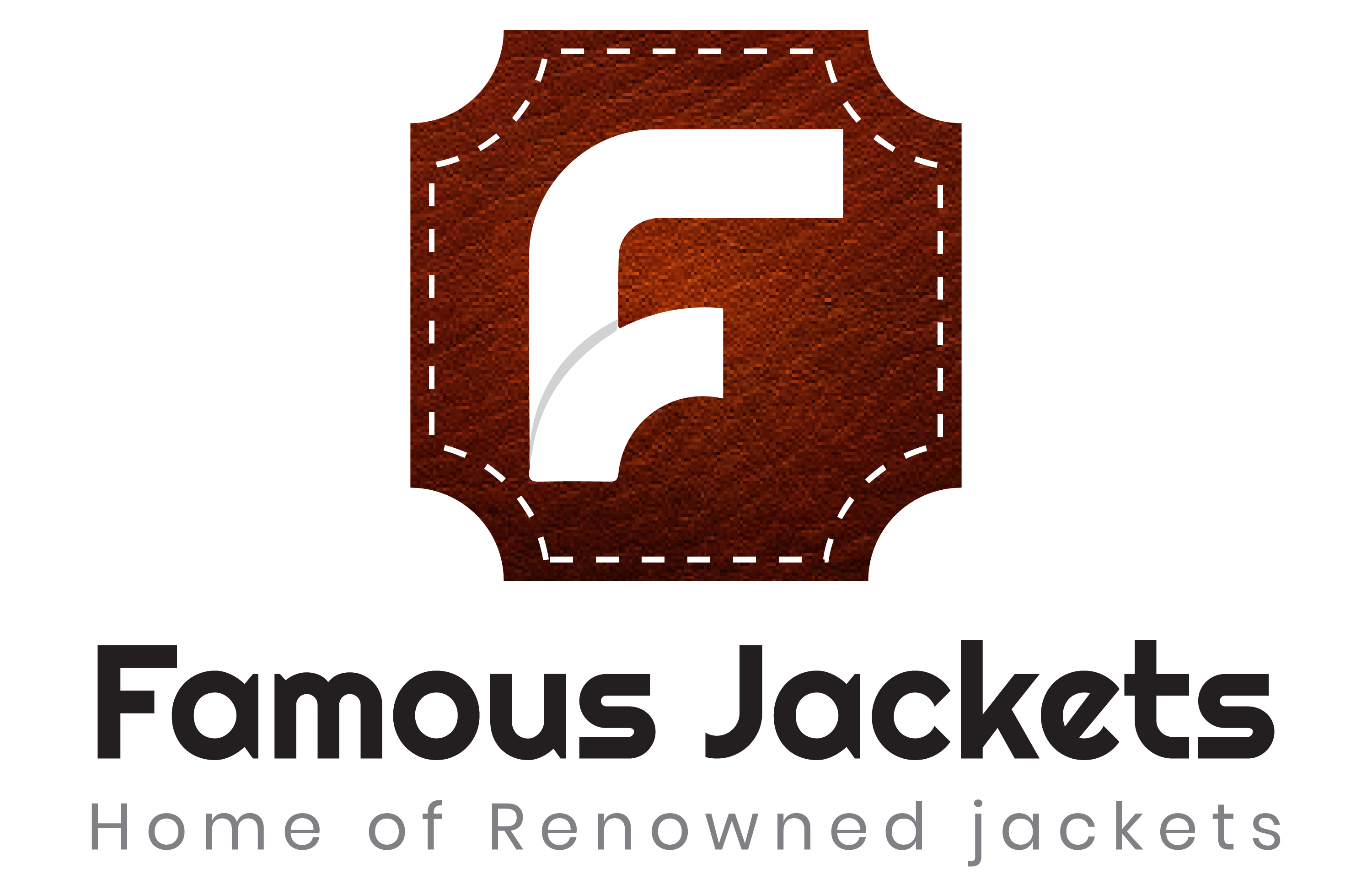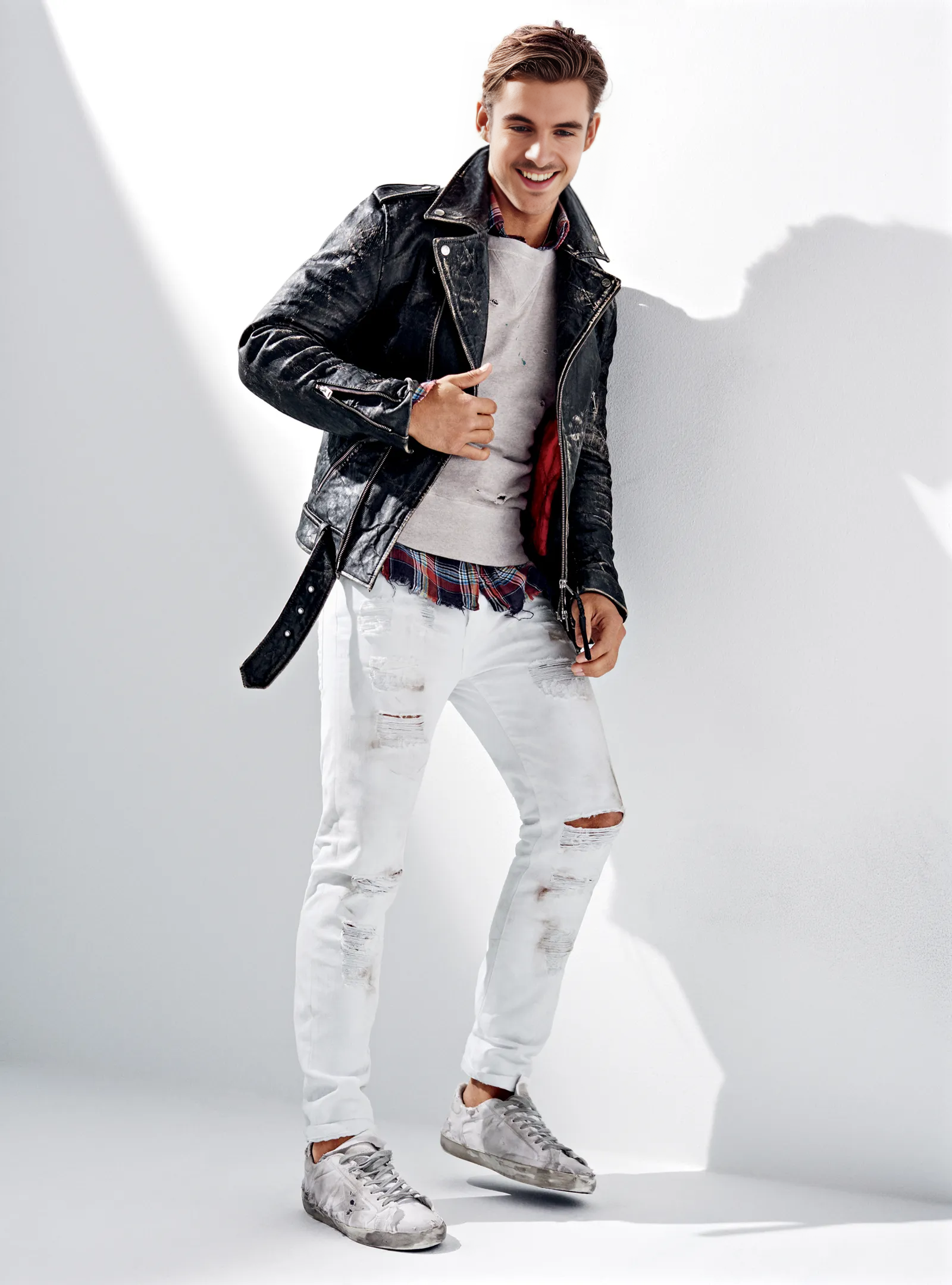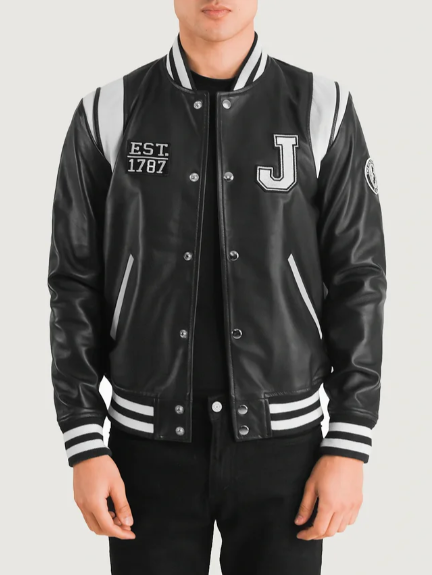
Evolution Leather Jacket : From Rebellion to Runway
From Rebellion to Runway: The Timeless Evolution of the Leather Jacket
I. Introduction
The leather jacket is more than clothing; it’s a chameleon, adapting to the ethos of every era while retaining its DNA of defiance. Born in the trenches of war, adopted by outlaws, and polished by haute couture, it has become a universal symbol of both rebellion and reinvention. This article traces its journey from utilitarian armor to a canvas for cultural storytelling—a garment that refuses to fade into obsolescence.
We’ll explore its military roots, its reign as the uniform of counterculture, its haute couture makeover, and how today’s innovators are reimagining it for a sustainable, tech-driven future. Buckle up: this is a ride through history, stitched in leather.
The Origins: Function Over Fashion
1. Early Practical Uses
The leather jacket’s origin story begins not on a motorcycle, but in the cockpit. During World War I, pilots soaring in open-air planes faced biting winds and freezing temperatures. Enter the A-1 bomber jacket: a snug, shearling-lined leather design crafted to keep aviators alive at high altitudes. Its functionality was revolutionary—zippered fronts replaced bulky buttons, and durable horsehide resisted wear from harness straps.
By the 1920s, the jacket found a new purpose on the ground. Irving Schott, a New York tailor, designed the first motorcycle-specific leather jacket in 1928: the Perfecto. Named after his favorite cigar, it featured a diagonal zipper (to prevent wind flap), a belted waist, and reinforced shoulders. Sold for $5.50 at Schott NYC’s store, it became the armor of choice for daredevil riders racing down highways, its thick hide shielding them from road rash and debris.
2. Symbol of Utility
In its early decades, the leather jacket was synonymous with survival, not style. Laborers wore it for protection in factories, police officers adopted it for its toughness, and explorers like Amelia Earhart draped it over their shoulders as they pushed boundaries. The design was unapologetically pragmatic:
Asymmetrical zippers allowed easy movement while riding.
Multiple pockets held tools, maps, or cigarettes.
High collars shielded necks from the elements.
This was clothing as equipment, built to endure. Yet, even then, hints of its future symbolism emerged. The jacket’s ruggedness attracted those living on society’s edges—adventurers, rebels, and outsiders who wore their defiance on their sleeves. By the 1930s, the leather jacket was no longer just practical; it was a quiet badge of resilience, foreshadowing its explosive cultural role in the decades to come.
III. The Rebel Era: Leather Jackets as Cultural Protest
1. Hollywood’s Rebel Archetype
The leather jacket’s shift from workwear to cultural defiance began on the silver screen. In 1953, Marlon Brando’s Johnny Strabler in The Wild One roared into cinemas atop a motorcycle, his Schott Perfecto jacket telegraphing danger and disdain for authority. The film was banned in some cities for “inciting delinquency,” but its impact was irreversible. Three years later, James Dean’s red nylon jacket in Rebel Without a Cause (1955) became a softer, more tragic symbol of teenage alienation—though fans retroactively misremembered it as leather, cementing the material’s link to rebellion.
Hollywood had turned the leather jacket into a uniform for outsiders. Studios received letters from outraged parents, while teens secretly stitched their own versions from thrifted military surplus. The jacket was no longer just protective gear; it was a middle finger to conformity.
2. Counterculture Movements
By the 1970s, the leather jacket became a blank slate for subversive self-expression:
Punk Rock’s DIY Rage: The Ramones standardized the “uniform” of skinny jeans, Converse, and a black leather jacket plastered with band patches and safety pins. Vivienne Westwood and Malcolm McLaren’s SEX boutique in London sold jackets slashed, studded, and scrawled with anarchist slogans, turning wearers into walking manifestos.
Political Statements: Feminist punks like Patti Smith and Siouxsie Sioux adopted the jacket to dismantle gendered stereotypes, pairing it with fishnets or lace to blur lines between “masculine” and “feminine.” Meanwhile, anti-war protesters in the 1960s stenciled peace signs onto their jackets, transforming a symbol of aggression into one of dissent. The leather jacket, once a marker of individual rebellion, became a collective cry for change.
IV. High Fashion Embraces the Edge
1. Designers Reinvent the Classic
The 1970s marked the leather jacket’s haute couture baptism. Yves Saint Laurent, inspired by the Parisian student riots of 1968, sent sleek, belted leather trenches down the runway in 1971—a stark contrast to his earlier opulent designs. Thierry Mugler followed in the 1980s with exaggerated shoulder pads and metallic finishes, merging biker grit with sci-fi glamour.
By the 1990s, the jacket had shed its “street” stigma. Gianni Versace’s baroque-printed leather blazers became a red-carpet staple, worn by supermodels like Naomi Campbell. Madonna’s Blond Ambition tour (1990) featured Jean-Paul Gaultier’s conical-bra leather corsets, blending fetish wear with high art. In the 2000s, designers like Rick Owens deconstructed the classic silhouette, creating drapey, gothic iterations that felt both ancient and futuristic.
2. Runway Moments
Alexander McQueen’s “Bumster” Jacket (1996): Paired with ultra-low-rise pants, his razor-sharp leather jackets redefined provocative tailoring.
Balenciaga’s “Coatigans”(2020s): DemnaGvasalia’s oversized, slouchy leather coats became viral sensations, championed by celebrities like Kim Kardashian.
Met Gala Madness: At the 2021 In America: A Lexicon of Fashion gala, Kim Kardashian wore a Balenciaga leather ensemble that fully obscured her face—a commentary on celebrity anonymity.
Fashion’s embrace didn’t sanitize the leather jacket: it amplified its edge. Designers borrowed its rebel soul but added luxe fabrics, avant-garde cuts, and runway theatrics. The jacket was no longer just counterculture—it was culture, period.
V. The Modern Leather Jacket: Sustainability, Tech, and Inclusivity
1. Eco-Conscious Innovation
The leather jacket is shedding its ecological baggage. As climate concerns reshape fashion, brands are pioneering planet-friendly alternatives:
Vegan Leather Revolution: Materials like Mylo™ (derived from mushroom roots), Piñatex (pineapple leaf fibers), and AppleSkin™ (apple waste) replicate leather’s texture without animal farming. Stella McCartney’s Falabella vegan jackets, for instance, blend luxury with activism.
Ethical Production: Brands like AllSaints and Nudie Jeans use chrome-free tanning and recycled leather scraps. E.L.V. Denim upcycles vintage jackets into one-of-a-kind pieces, slashing waste.
Circular Fashion: Rental platforms like Rent the Runway and By Rotation let consumers lease designer leather jackets, reducing overconsumption.
2. Tech Meets Tradition
The 21st-century leather jacket is smarter—and stranger—than ever:
- Heated Jackets: Brands like Diesel and Vollebak integrate graphene-lined panels or battery-powered heating elements for Arctic-ready style.
- Biodegradable Treatments: Startups like BioCouture experiment with lab-grown leather that decomposes naturally, avoiding landfill guilt.
- Digital Fashion: Virtual jackets (e.g., RTFKT’s NFT outerwear) let users flaunt leather styles in the metaverse without physical production.
3. Breaking Boundaries
The modern leather jacket rejects outdated norms:
Gender Fluidity: Designers like Telfar and Haider Ackermann create boxy, unstructured jackets that defy “menswear” or “womenswear” labels. Harry Styles and Janelle Monáe have championed androgynous leather looks on red carpets.
Size Inclusivity: Brands like Universal Standard and 11 Honoré offer extended sizing without sacrificing edge, proving leather isn’t just for sample sizes.
Cultural Reclamation: Indigenous designers like Bethany Yellowtail (B.Yellowtail) incorporate traditional beadwork and patterns into leather jackets, merging heritage with contemporary cool.
VI. How to Style the Leather Jacket Today
1. Timeless Pairings
The leather jacket’s magic lies in its chameleon-like versatility:
- Classic Cool: Pair a black biker jacket with straight-leg jeans, a white tee, and Chelsea boots—a foolproof formula from Paris to Tokyo.
- Unexpected Elegance: Drape a cropped leather moto jacket over a midi slip dress and ankle boots for a night out.
- Power Clashing: Contrast a sleek leather blazer with plaid trousers or a floral maxi skirt to balance edge with whimsy.
2. Seasonal Adaptability
- Winter Warrior: Layer a shearling-lined leather jacket over a chunky knit sweater and corduroy pants. Add a scarf and leather gloves for extra warmth.
- Summer Edge: Opt for a perforated or cropped jacket worn over a graphic tank top and high-waisted shorts. Finish with sandals or chunky sneakers.
- Spring/French Girl: Throw a lightweight leather jacket over a striped Breton top and wide-leg jeans. Roll the sleeves for nonchalance.
3. Personalization Trends
- DIY Rebellion: Revive punk’s spirit with hand-painted slogans, embroidered patches (try Etsy artists like NoBudge), or rivet embellishments.
- Luxury Customization: Brands like Gucci and Burberry offer monogramming services, letting you stamp initials or art onto sleeves.
- Vintage Remix: Hunt thrift stores for 90s bomber jackets, then modernize them with bleached accents or oversized belt buckles.
VII. Conclusion
The leather jacket is a shapeshifter, forever evolving yet eternally recognizable. It has survived world wars, outlived fleeting trends, and transcended its origins as a utilitarian tool to become something far more profound: a mirror of society’s aspirations, anxieties, and revolutions. From the battlefields of WWI to the glittering runways of Paris, from punk mosh pits to Pride parades, it has absorbed every era’s ethos while retaining its core—raw, resilient, and relentlessly cool.
As we look ahead, the leather jacket’s future is as dynamic as its past. Climate urgency will drive innovation, with lab-grown biomaterials and circular design pushing the industry toward carbon neutrality. Technology will blur the lines between physical and digital, as augmented reality filters let us “try on” NFT jackets or that designs personalize our avatars. Yet, even as it adapts, the jacket’s soul remains rooted in individuality—a wearable manifesto for those who dare to stand out.
So, what’s your leather jacket story? Will it be a thrifted Perfecto, its cracks whispering of past rebellions? A genderless vegan coat, defiantly modern? Or a custom piece emblazoned with your art, your voice, your truth? However you choose to wear it, remember: this isn’t just a garment. It’s a legacy stitched into the fabric of culture, waiting for you to redefine it.


